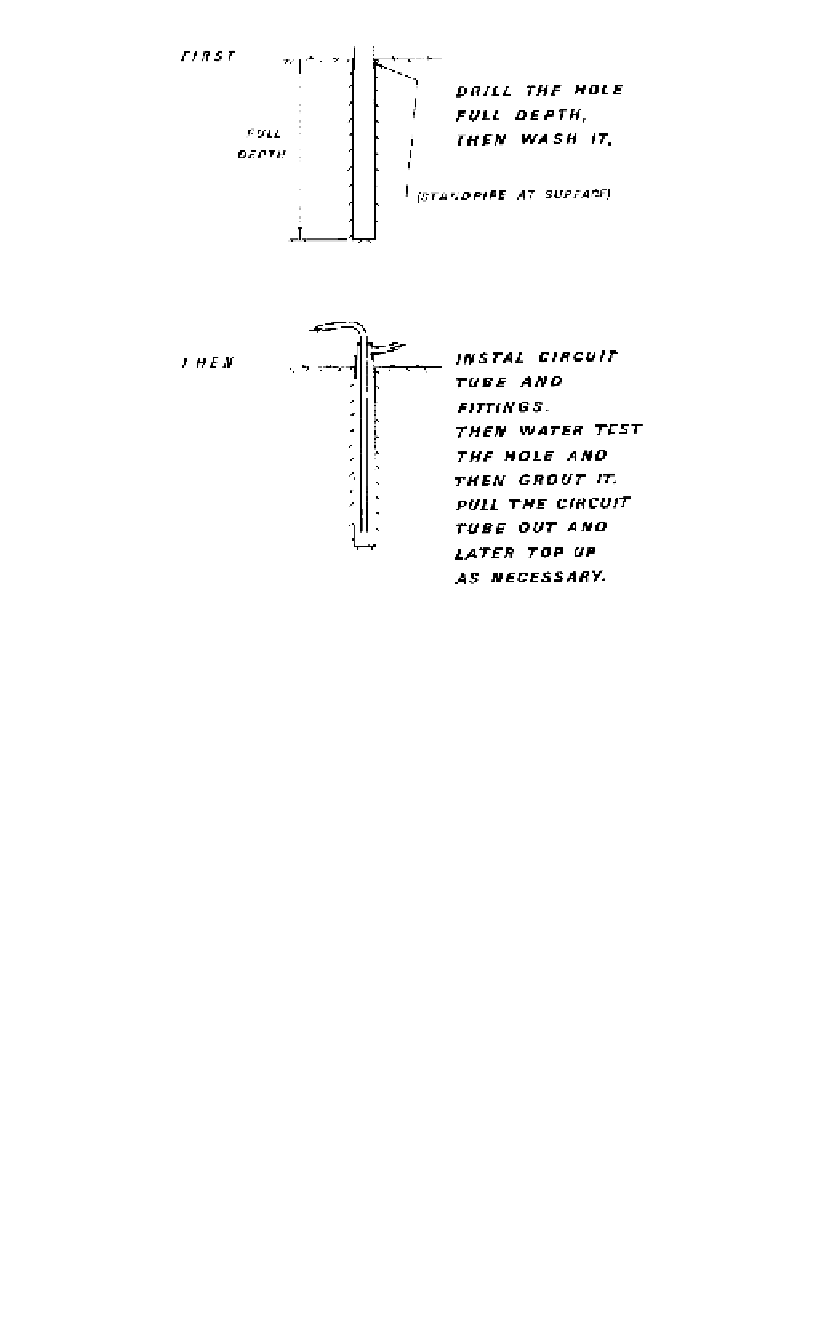Environmental Engineering Reference
In-Depth Information
Figure 18.7.
Grouting full depth, circuit (WRC, 1981).
- The grout hole is caving, due, for example, to closely fractured rock, or
-Water flows into the hole under pressure, or
-Very large water pressure test or grout takes are encountered (often it is possible to
relate these to a specific geological feature).
18.2.2
The principles of “closure”
Apart from consolidation grouting, which may be carried out to a predetermined depth
and hole spacing, grouting should be carried out sequentially to achieve a predetermined
standard of water tightness. This will usually require the successive halving of hole spac-
ing from primary to secondary to tertiary holes etc. as shown in
Figure 18.1
. Whether the
required standard has been achieved will normally be determined on the basis of water
pressure test Lugeon values on the grout stage prior to grouting and/or on grout take - the
volume (or weight of cement) of grout per metre of grout hole. Closure criteria will be dis-
cussed in more detail below.
Figure 18.8
shows the basic principles of hole closure, i.e.
that secondary holes are drilled halfway between primary if water pressure tests (and/or
grout takes) in the primary holes fail to meet the closure criteria.
Figure 18.9
, taken from Houlsby (1977) and WRC (1981), gives examples of the clo-
sure method when Lugeon water pressure test values are the required standard.
In these examples:
Case (a) Primary grouting has resulted in a reduction in Lugeon value (and grout
take) in the secondary hole and tertiary grouting has resulted in further reductions close
enough to the closure requirement of 7 Lugeons (uL). Hence no further grouting is
required. If the closure requirement was say 5 uL, quaternary holes would have been
required and would seem worthwhile as there is a progressive reduction in Lugeon value
and in grout take.

